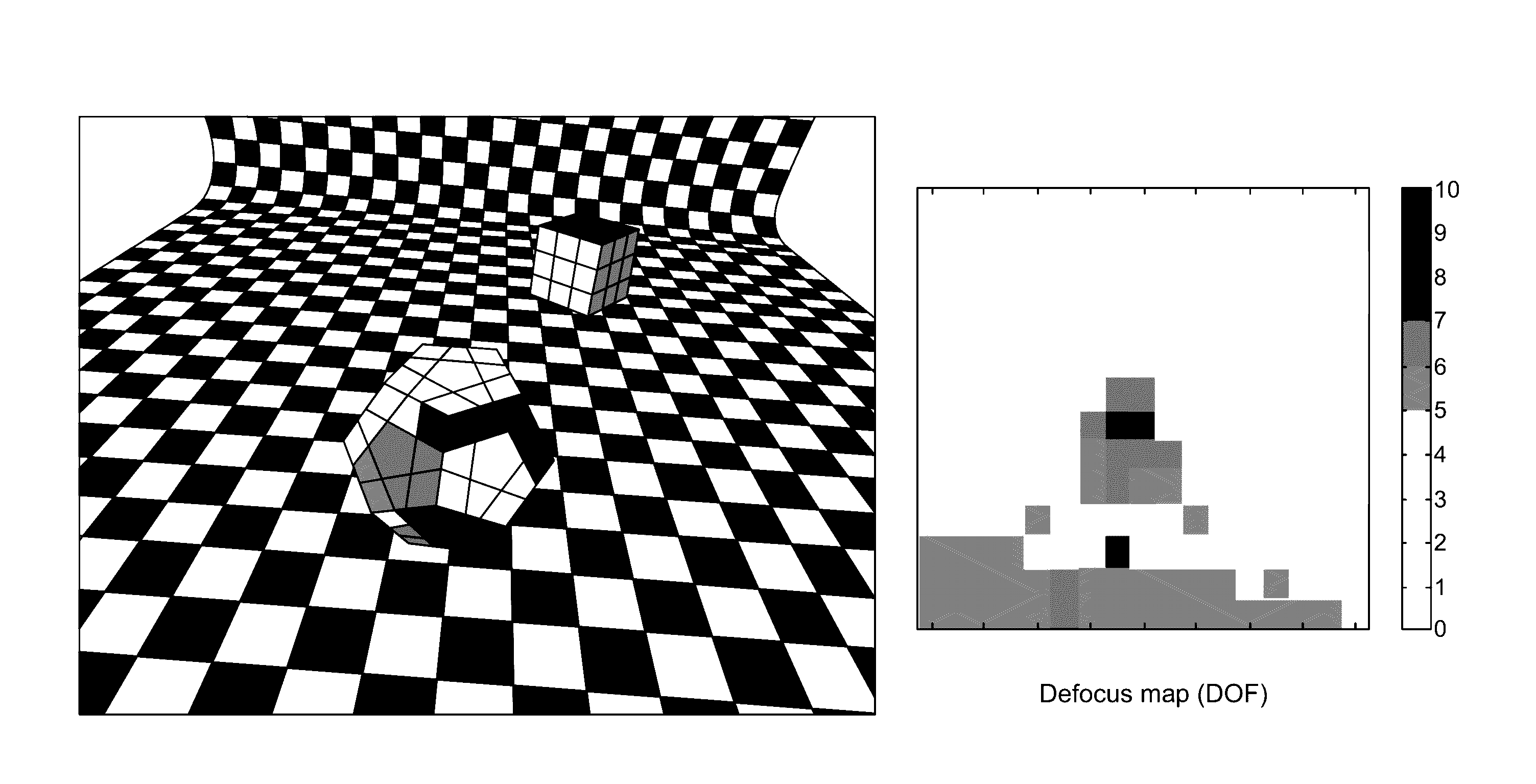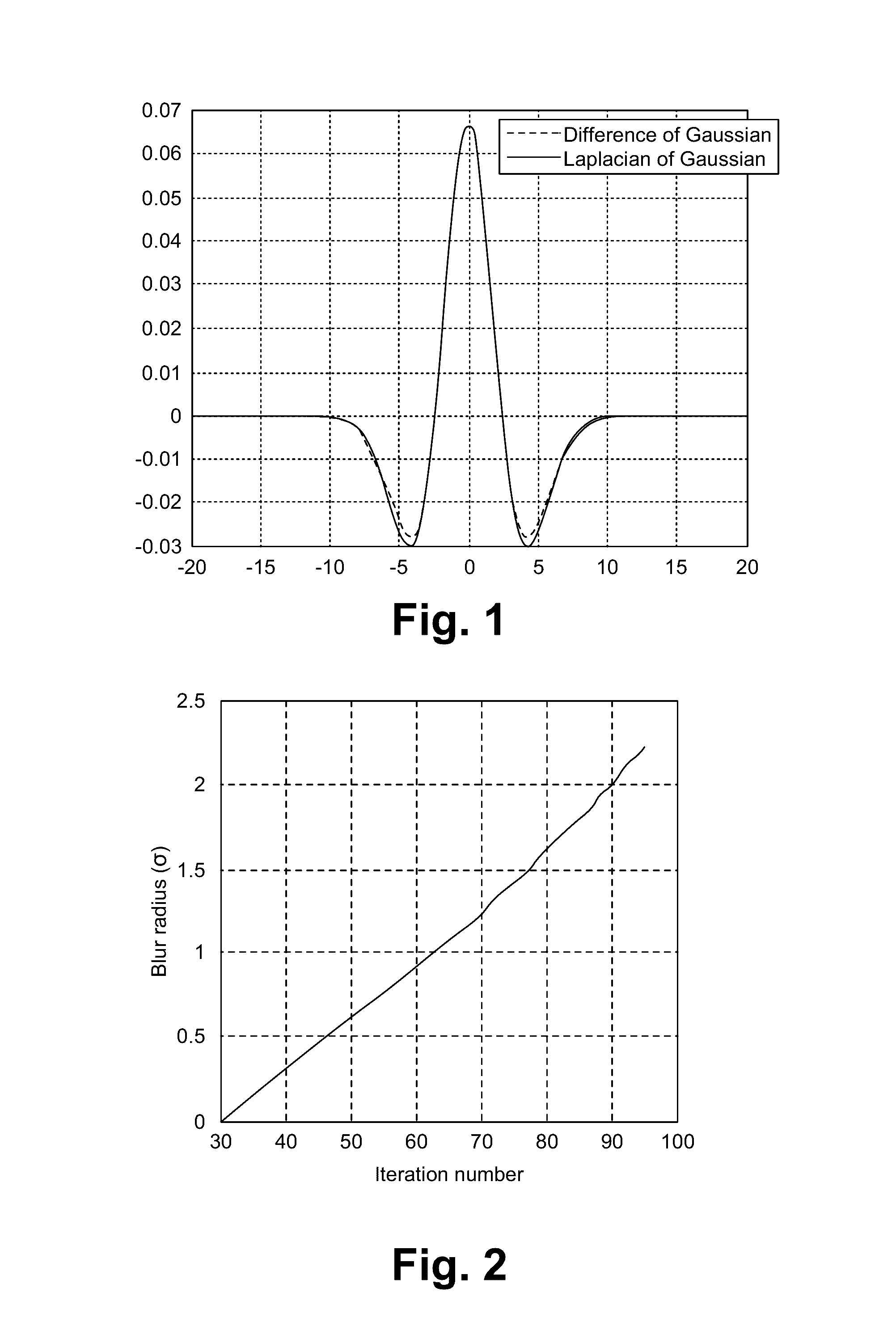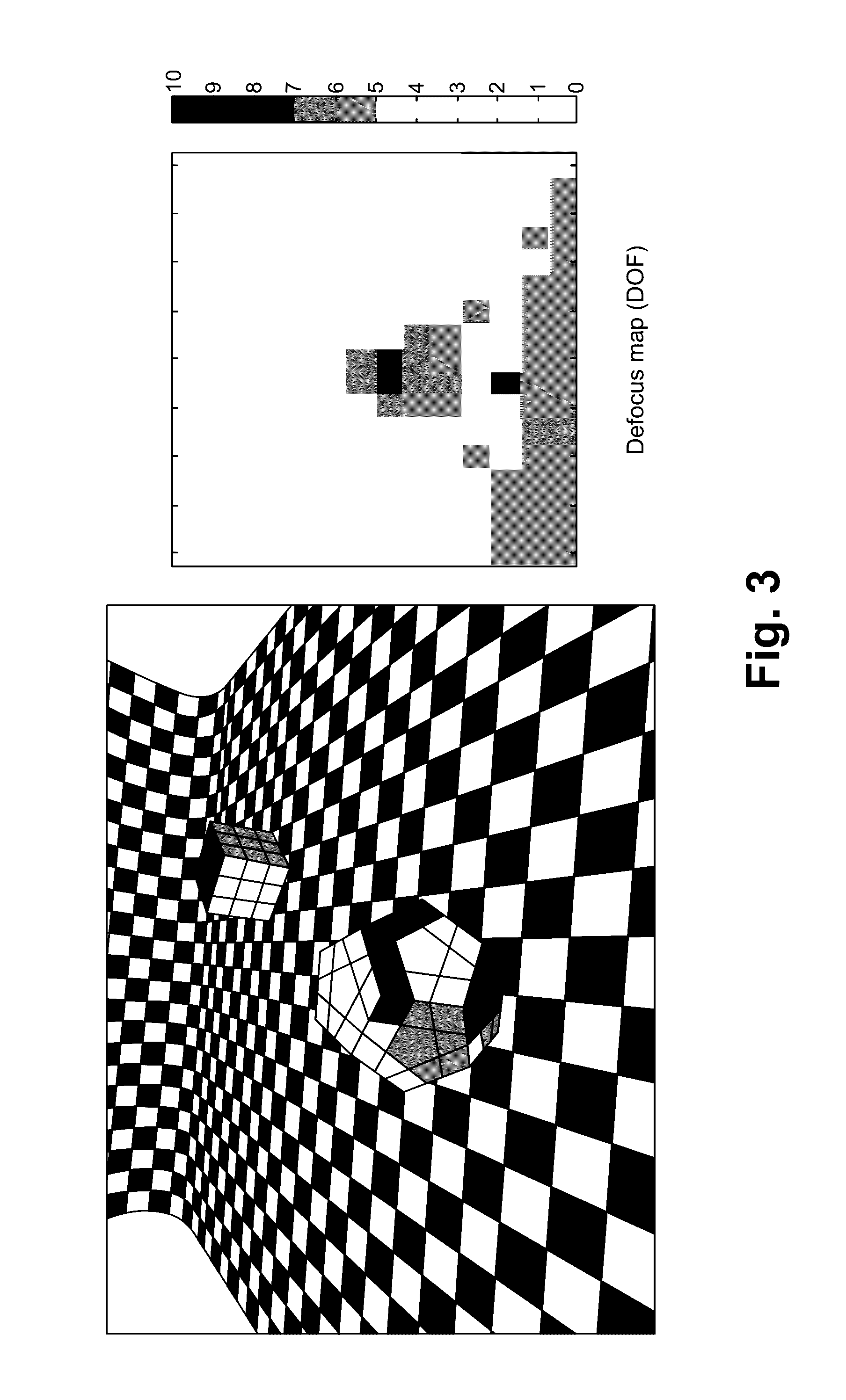Defocus estimation from single image based on laplacian of gaussian approximation
a single image and defocus estimation technology, applied in the field of defocus estimation, can solve problems such as blurring or defocusing, image defects, blur and defocus, and cannot be sufficiently corrected
- Summary
- Abstract
- Description
- Claims
- Application Information
AI Technical Summary
Benefits of technology
Problems solved by technology
Method used
Image
Examples
Embodiment Construction
[0014]An approximation between a Laplacian of Gaussian (LoG) and Difference of Gaussian (DoG) to estimate defocus using a single image is described herein. The second derivative of a Gaussian function is the Laplacian of the Gaussian. A negative second derivative of the Gaussian function is shown in FIG. 1.
G(x,σ2)=1σ2πexp(-x22σ2)
A heat diffusion equation is:
σG″(x,σ2)=∂G(x,σ2)∂σ≈G(x,σ22)-G(x,σ12)σ2-σ1Atx=0,σG″(0,σ2)=1σ22πG(0,σ22)-G(0,σ12)σ2-σ1=1σ22π-1σ12πσ2-σ1=-1σ1σ22π
By choosing σ=√{square root over (σ1σ2)}, this gives a perfect match at x=0.
In a further approximation, the DoG is:
G(x,σ22)-G(x,σ12)≈(σ2-σ1)σ1σ2G″(x,σ1σ2)≈(σ2-σ1)(σ1+σ22)G″(x,σ1σ2)=(σ22-σ122)G″(x,σ1σ2)
A model for defocus blur is given by:
b=fG(x,σ2)
where,
b is an out-of-focus image,
f is an in-focus image,
G is a Gaussian Point Spread Function (PSF), and
[0015] denotes convolution.
[0016]The goal is to estimate σ from b.
ba=bG(x,σa2)=fG(x,σ2+σa2)
Reblur: bb=bG(x,σb2)=fG(x,σ2+σb2)
σb>σa
[0017]The blur difference...
PUM
 Login to View More
Login to View More Abstract
Description
Claims
Application Information
 Login to View More
Login to View More - R&D
- Intellectual Property
- Life Sciences
- Materials
- Tech Scout
- Unparalleled Data Quality
- Higher Quality Content
- 60% Fewer Hallucinations
Browse by: Latest US Patents, China's latest patents, Technical Efficacy Thesaurus, Application Domain, Technology Topic, Popular Technical Reports.
© 2025 PatSnap. All rights reserved.Legal|Privacy policy|Modern Slavery Act Transparency Statement|Sitemap|About US| Contact US: help@patsnap.com



